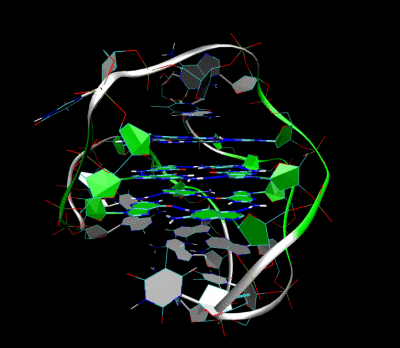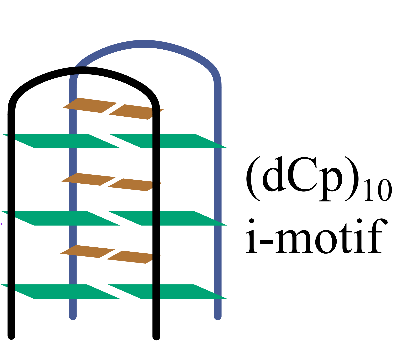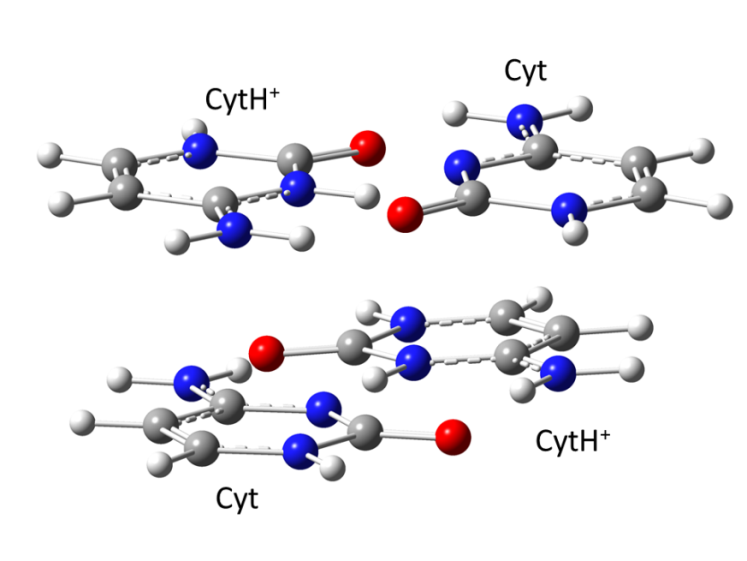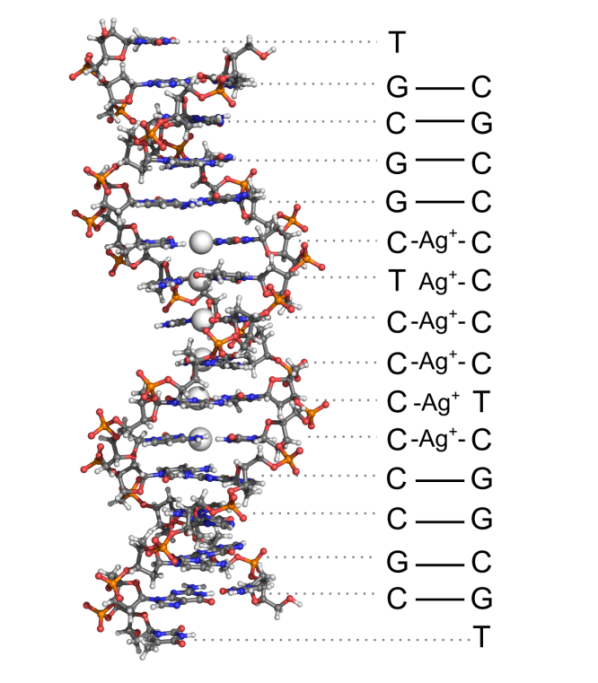DNA nanostuctures
DNA, depending on the primary structure (base sequence) and external factors (pH, interaction with metal ions, ligands) can form various non-canonical structures.
For example, guanine sequences interact with alkali metal ions to form G-quadruplexes:

By Iridos, CC BY-SA 3.0, https://commons.wikimedia.org/w/index.php?curid=3285345
and the cytosine sequences with decreasing pH - the structure of the i-motif:
 |  |
| The structure of the i-motif formed by two cytosine chains | The structure of the semi-protonated cytosine tetramer from the PDB base (1ELN) used in our calculations (ZV Reveguk, EV Khoroshilov, AV Sharkov, VA Pomogaev, AA Buglak, AN Tarnovsky, AI Kononov, Exciton Absorption and Luminescence in i-Motif DNA, Sci. Rep. 2019; 9: 15988. [DOI link]). |
Complexes of nitrogenous bases of DNA with ions of silver and other metals can lead to the formation of supramolecular structures consisting of several DNA strands. For example, as shown in this picture:

Optimized structure of DNA dimer in a complex with silver ions (IL Volkov, ZV Reveguk, P. Yu. Serdobintsev, RR Ramazanov, AI Kononov. DNA as UV light-harvesting antenna, Nucleic Acids Res., 2018, 46 (7), 3543-3551. [DOI link]).
We study both the structural features of such self-assembling structures and how the properties of their electronically excited states change.

 English (United Kingdom)
English (United Kingdom)  Russian (Russia)
Russian (Russia)